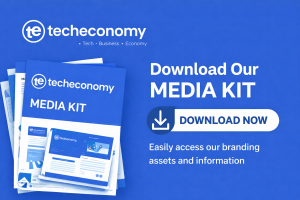The future of your business is dependent on a lot, rather than letting it remain as it is in the present, you should work towards making it better.
Here we are in 2023, do you intend utilizing same strategies as previous years? With everything from social media to mobile apps taking giant leaps, you can’t remain behind, you should be ready for them and take up dynamism in your business.
You might already be thinking of new strategies, so whether you are or not, here are areas you need to focus on improving or making better:
#1: A great team
Without a good team, your business will suffer. You might be doing good in this aspect already, but take note of consistency in the drive and hunger of team members that have their personal goals and aspirations.
A good team needs to be able to communicate with each other and work together on tasks. You’ll also want them to be able to delegate those tasks out so that they aren’t always doing everything themselves. A good leader will trust his or her employees enough to let them take charge of certain aspects of their jobs rather than micromanaging them all the time (or at least not micromanaging them too much). And finally, there needs to be motivation among everyone involved—it’s no surprise that we all like getting paid for what we do!
#2: An online presence
Yes, you have an online presence and a website, but how are they helping your business grow? Consider user-friendliness and responsiveness. You’ll also want to have a social media presence with at least Facebook and Twitter accounts as well as LinkedIn and Instagram handles if possible.
How well do you interact with old and new users as well as visitors or passers-by? Can your online presence attract them so much that they come back over and over again?
#3: A good headshot
It might seem funny to you adding this, but really, a good headshot is one essential tool for your business.
A headshot is a high-resolution photo of your face. It can be used in any type of business marketing material, including social media profiles, websites and email newsletters.
The best way to take a good headshot is by having it taken professionally by an experienced photographer who specializes in this area. They’ll make sure that the lighting is perfect so you don’t look orange or washed out; they’ll also ensure there’s enough space around your face so people can see what kind of person you are—and vice versa! If possible, try wearing something professional like a suit or sweater vest for this session too (or whatever else works).
#4: A strong personal brand
Your brand is the sum total of who you are and what you stand for. It’s not about how many followers or followers per month; it’s about being consistent with who you are, so people know exactly what to expect from your business.
A strong personal brand can help boost your business in several ways:
It gives potential clients an idea of how they should interact with your company (and vice versa). For example, if someone has worked with another company in the past and knows that they’re known for their friendly attitude, then it will be easier for them to trust that same type of treatment when working with yours!
You’ll be able to avoid any misunderstandings about whether or not something was okay during a project—if someone has been working on similar projects before meeting up again later on down the line after finishing up their current ones together.
#5: A social media strategy
A social media strategy is a must-have for any business. It’s not just about posting content, but also about scheduling and analyzing your posts to ensure they’re reaching the right people at the right time. Social media tools will help you do this more efficiently than ever before:
Scheduling tools – These are used to schedule when and where you want your social media posts published so that they reach their intended audience as soon as possible. You can also use these tools to curate content from other sources (such as blogs) that fit your brand message or industry standards and then republish them on multiple platforms simultaneously if necessary!
Analytics – Once you’ve created an editorial calendar for all of your different types of posts (Facebook ads, Instagram stories), it’s important that each one receives equal attention throughout its lifespan so there aren’t any gaps between when something goes live versus being seen by potential followers/patrons.
#6: A good website
A good website is a key part of your online presence. It should be easy to navigate and load quickly, with a professional headshot that shows off your best features. You should also have it mobile-friendly so visitors can access the site from any device they like (including smart TVs).
#7: SEO and SEM strategies
SEO and SEM strategies are essential for any business. The goal of SEO is to get your website to the top of search engines, while SEM is a way to get your website to the top of search engine results, but also pay for it.
In both cases, you need to have a strategy that will help you reach your target audience so they can find and engage with your content.
#8: Social listening tools for marketing
Monitor social media to see what people are saying about you, your competitors, and the industry.
Use tools like Hootsuite or Radian6 to monitor social media.
Use tools like Brand24 or SocialMention to monitor social media.
Use tools like Google Alerts to monitor social media
#9: Ads on Youtube, Facebook, and LinkedIn
Youtube, Facebook and LinkedIn are among the most popular social media platforms in the world. These sites allow you to reach your target audience with ads that can be targeted to specific audiences. This is a great way to reach potential customers because they will see your ad every time they log into their account. However, this also means that you’ll need to spend money on ads on these platforms if you want them to appear frequently in front of people who may be interested in what your business has available for sale or services offered by its employees
#10: Google Analytics and Google Data Studio
If you want to see exactly how your website is performing, Google Analytics and Google Data Studio are two tools that can help. Both of these tools will provide a lot of useful data about your business and its performance on the web.
You might be thinking: “What good does this information do for me?” Well, the first thing that comes to mind is that it helps you keep track of traffic trends over time—which in turn allows you to make decisions based on data instead of assumptions or hunches.
Another benefit is knowing which parts of your site are working well (and what needs improvement). This means that when someone uses one part of your site they don’t get stuck trying out another feature they didn’t expect—they only have access to what’s relevant at each point in time!
#11: Content marketing strategies that work for you
Content marketing is a great way to build your brand, attract new customers and sell products or services.
You can use content marketing to build an email list of people who are interested in what you have to say.
You can use it to create content that’s helpful for your customers and prospects (but also fun). In other words, it should be something that interests them as well as informing them about what they need.
You could use this same strategy when promoting yourself through social media platforms like Facebook or Instagram – by posting interesting photos of yourself with animals, perhaps!
#12: Email marketing tools like MailChimp, Constant Contact, and Zoho Campaigns for building your email list and sending out newsletters
Email marketing is a great way to build your email list, send out newsletters and stay in touch with customers. There are several tools that you can use for managing your email list:
MailChimp – This tool makes it easy to create, send and track emails. You can add contacts from all of your social media accounts into the same inbox as well as reply-to-all messages so they don’t get lost in cyberspace. It also has analytics built into its dashboard so you can see how many people have opened each of your emails or clicked on links within them.
Constant Contact – The most popular tool when it comes to building lists goes by another name: Constant Contact is one of the top providers in this niche field due to its wide range of features available at no cost (that includes templates). They even offer an app that allows users without any coding knowledge whatsoever access their platform!
#13: A great CRM (customer relationship management) software like HubSpot or Salesforce to keep track of your sales team’s outreach efforts, managing leads, organizing contacts, and maintaining relationships with current customers
CRM software is a great tool for managing your sales team’s outreach efforts. It can be used to manage leads, organize contacts, and maintain relationships with current customers. There are many different CRM solutions available that you can choose from depending on what features you need most in order to run your business smoothly. HubSpot and Salesforce are two popular CRM solutions that offer easy-to-use platforms for managing any type of business or organization online (including small businesses).
Conclusion
The tools and strategies we’ve outlined here will help you build a strong digital presence, as well as grow your business. As we mentioned earlier, it’s important to stay on top of trends in order to be ahead of your competitors—and this is where Google Analytics comes into play. If you use this tool effectively, it can provide insights into how people are interacting with your website or app and help improve user experiences across all platforms (not just mobile).







